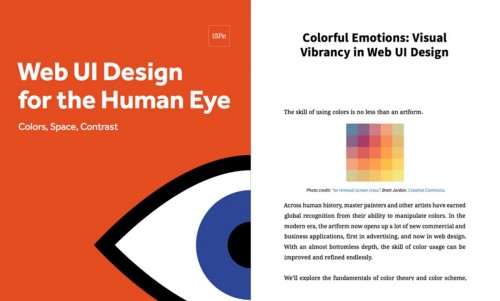
Long before the Internet, scientists have been unraveling the mysteries and peculiarities of human sight. As a visual medium, web design has only to gain from their discoveries.
Aside from simply knowing their craft, designers can mine a variety of practical applications from the study of human sight. In the realm of visual hierarchy alone, knowing how to implement size, spacing, and contrast can influence the order elements are seen and the how important they appear.
Colors, too, are a powerful tool in the hands of those that use them. With each color evoking different feelings (orange for playfulness, blue for trust, etc.), designers can quantitatively construct the right emotional atmosphere for their project. Even the way in which different colors are combined changes their effects.
Source: Fanta
UXPin collects the most helpful resources on human sight for web design, and compiled them into their e-book series Web UI Design for the Human Eye. The guide describes practical techniques with visual case studies from 33 companies like Google, Bose, Intercom, Medium, Tumblr, and others.
Volume 1, downloaded by almost 40,000 people this year, covers advanced topics such as the use of spacing, the emotional affects of colors, and the principles of Gestalt (an early 1900s movement analyzing visual phenomena).
It’s not enough that people see your site — what matter is how they see your site.
Check out the free guide and let us know what you think in the comments.
Read More at Free e-Book: Web UI Design for the Human Eye
from Web Design Ledger http://webdesignledger.com/free-e-book-web-ui-design-for-the-human-eye


Nice post !! I really enjoyed your well written article thanks for share....
ReplyDeleteWeb development in Canada
Web development in Toronto